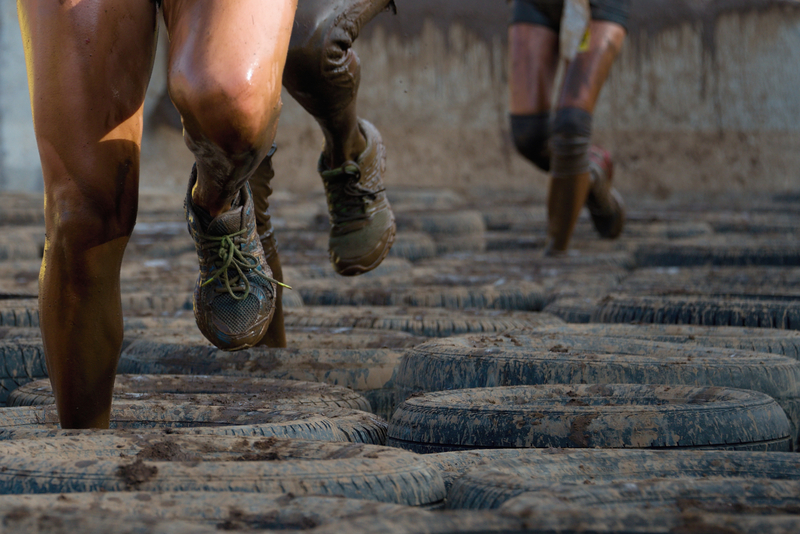Everything You Need to Know About Hazardous Waste
Hazardous waste affects our health, environment, and everyday lives more than many people realize. In an increasingly industrialized and technology-driven world, proper identification, management, and disposal of hazardous materials is crucial for sustaining a clean and healthy planet. Whether you are a homeowner, business owner, or simply an environmentally conscious individual, understanding hazardous waste management is vital.
What is Hazardous Waste?
Hazardous waste refers to any material that poses a substantial or potential threat to public health or the environment. According to the Environmental Protection Agency (EPA) in the United States, a waste is considered hazardous if it exhibits dangerous properties or contains toxic components. These wastes are often byproducts of industrial manufacturing processes, but they can also originate from households, healthcare facilities, agricultural operations, and more.
Characteristics of Hazardous Waste
- Toxicity: Wastes that are harmful or fatal when ingested or absorbed (e.g., pesticides, lead, mercury).
- Ignitability: Materials that can catch fire easily (e.g., gasoline, oil-soaked rags, solvents).
- Corrosivity: Substances that can corrode metal or destroy living tissue (e.g., battery acid, caustic drain cleaners).
- Reactivity: Wastes that can cause explosions or release poisonous gases (e.g., certain cyanides, peroxides).
Not all wastes marked "hazardous" will exhibit all these traits--some may only have one or two hazardous characteristics.

Types and Examples of Hazardous Waste
1. Industrial Hazardous Waste
- Solvents: Used in manufacturing or cleaning machinery.
- Heavy Metals: Such as lead, mercury, cadmium from electronics or battery manufacturing.
- Paints and Coatings: Leftover or expired paints and varnishes.
2. Medical or Biomedical Waste
- Sharps: Needles, scalpels, and other sharp instruments.
- Pharmaceuticals: Expired or unused medications.
- Biological Waste: Blood, tissues, or cultures from laboratories.
3. Household Hazardous Waste
- Batteries: Particularly rechargeable, lithium-ion, or lead-acid batteries.
- Chemical Cleaners: Bleach, ammonia, or other harsh cleaning agents.
- Pesticides and Herbicides: Lawn and garden treatments.
- Automotive Products: Antifreeze, motor oil, fuel additives.
4. Electronic Hazardous Waste (E-Waste)
- Computers and Monitors: Containing lead, mercury, and flame retardants.
- Cell Phones: With lithium-based batteries and other metals.
- Televisions: Especially older CRT models with hazardous components.
Why Proper Hazardous Waste Management Matters
Improper disposal of hazardous materials leads to severe environmental and health risks. These include water contamination, soil erosion, air pollution, and direct poisoning of humans and wildlife. Strict regulations exist at local, regional, and international levels to monitor and control the handling of hazardous waste.
Environmental Impacts
- Soil Contamination: Leaked chemicals can render land infertile and dangerous for years.
- Water Pollution: Runoff from improper disposal can seep into groundwater, lakes, and rivers.
- Air Pollution: Burning hazardous waste can release toxic gases, causing respiratory illnesses and contributing to smog.
Health Risks
- Acute Poisoning: Direct skin contact or inhalation can cause serious health conditions, including burns, rashes, or organ failure.
- Long-Term Exposure: Chronic effects include cancer, neurological damage, and developmental disorders.
How is Hazardous Waste Classified?
The EPA classifies hazardous waste based on its origin, composition, and management. The two primary classes are:
- Listed Waste: Wastes specifically named on one of four EPA lists (F, K, P, and U lists).
- Characteristic Waste: Wastes exhibiting properties such as ignitability, corrosivity, reactivity, or toxicity.
Universal wastes (like batteries and fluorescent bulbs) and mixed wastes (both radioactive and hazardous) are also important categories.
The Four EPA Hazardous Waste Lists
- F-List: Wastes from common manufacturing processes (e.g., solvents).
- K-List: Wastes from specific industries (e.g., petroleum refining).
- P-List: Acutely hazardous chemicals and unused commercial products.
- U-List: Toxic chemicals and products; less hazardous than P-List.
Hazardous Waste Disposal Methods
Proper hazardous waste disposal is crucial to mitigate the risks posed by toxic materials. Here's a closer look at some of the most common methods:
1. Landfill Disposal
- Specially designed hazardous waste landfills feature multiple layers of liners and safeguards to prevent leaks.
- Only certain non-reactive and non-volatile wastes are permitted for landfill disposal.
2. Incineration
- High-temperature incinerators break down the chemical composition of wastes.
- Reduces the volume of waste and destroys toxic pollutants, but can release some pollutants into the air if not properly controlled.
3. Chemical Treatment
- Involves neutralizing, oxidizing, or otherwise transforming hazardous compounds into safer substances.
- Common for liquid wastes such as acids, bases, or certain organics.
4. Biological Treatment
- Uses microorganisms to degrade toxic chemicals, especially organic waste.
- Often used for contaminant cleanup in soil and groundwater.
5. Recycling and Resource Recovery
- Many hazardous wastes can be recycled, such as solvents, batteries, or mercury-containing devices.
- Reduces environmental impact and supports the circular economy.
Household Hazardous Waste: What You Need to Know
Many everyday products--cleaners, paints, pesticides--are considered household hazardous waste. Local governments frequently offer community collection events or designated drop-off centers for safe disposal.
Tips for Safe Household Hazardous Waste Management
- Never mix different chemicals: This can cause dangerous reactions.
- Store in original containers: Containers are often designed to prevent leaks or accidental exposure.
- Label and date products: Especially when storing for long periods.
- Use local resources: Check your city or county website for disposal guidance and event schedules.
- Do not pour down the drain: Avoid contaminating water sources by flushing hazardous materials.
Legal Regulations and Compliance
Handling hazardous waste is subject to strict regulations not only at the national but also state and local levels.
Key US Regulations
- Resource Conservation and Recovery Act (RCRA): The primary federal law governing hazardous waste from "cradle to grave."
- CERCLA (Superfund): Law addressing abandoned hazardous waste sites and spills.
- Toxic Substances Control Act (TSCA): Regulates specific substances such as PCBs and asbestos.
International Frameworks
- Basel Convention: Controls transboundary movements of hazardous waste between nations.
- Rotterdam Convention: Regulates international trade of specific hazardous chemicals.
Best Practices for Businesses and Institutions
Companies and organizations generating hazardous waste must adhere to:
- Proper labeling and storage of all hazardous products and waste materials.
- Maintaining accurate records of waste generation and disposal.
- Training employees in safe handling procedures and emergency response.
- Partnering with certified waste transporters and disposal facilities to ensure legal and environmentally sound disposal.
Emerging Challenges and Trends
Today, hazardous waste management faces new pressures from increased e-waste, industrial expansion, pharmaceutical residues, and illegal dumping. In response, authorities and innovators are adopting improved monitoring, recycling, and waste minimization strategies.
Innovations in Hazardous Waste Handling
- Advanced chemical treatment: Using specialized catalysts and processes that neutralize a wider range of pollutants.
- Smart tracking and reporting: Leveraging digital systems for better transparency and compliance.
- Greener alternatives: Developing less-toxic chemicals and manufacturing processes to reduce the volume of hazardous byproducts.

Frequently Asked Questions about Hazardous Waste
- Can hazardous waste be recycled? -- Yes, certain types such as batteries, electronics, and some chemicals can be recycled.
- Is all waste from hospitals hazardous? -- No, only certain materials (e.g., sharps, contaminated items) are classified as biomedical waste.
- What should I do with old paint or cleaning products? -- Take them to community hazardous waste collection events or contact your local government for safe disposal guidance.
- What happens if hazardous waste is dumped illegally? -- Illegal dumping is strictly enforced, resulting in hefty fines and cleanup mandates for responsible parties.
Conclusion: Taking Responsibility for Hazardous Waste
Hazardous waste is a critical issue that affects everyone, from individuals to global communities. Proper handling, storage, and disposal protect our environment and health, minimize long-term damage, and promote a safer, cleaner future. Whether you're disposing of batteries at home or managing chemical byproducts in a factory, education and compliance are key. Stay informed, use available resources, and always follow best practices for hazardous material management--our world depends on it.
For more information, always check your local regulations or official sources like the EPA's hazardous waste page or international guidelines. Remember: safe handling of hazardous waste protects both people and the planet.